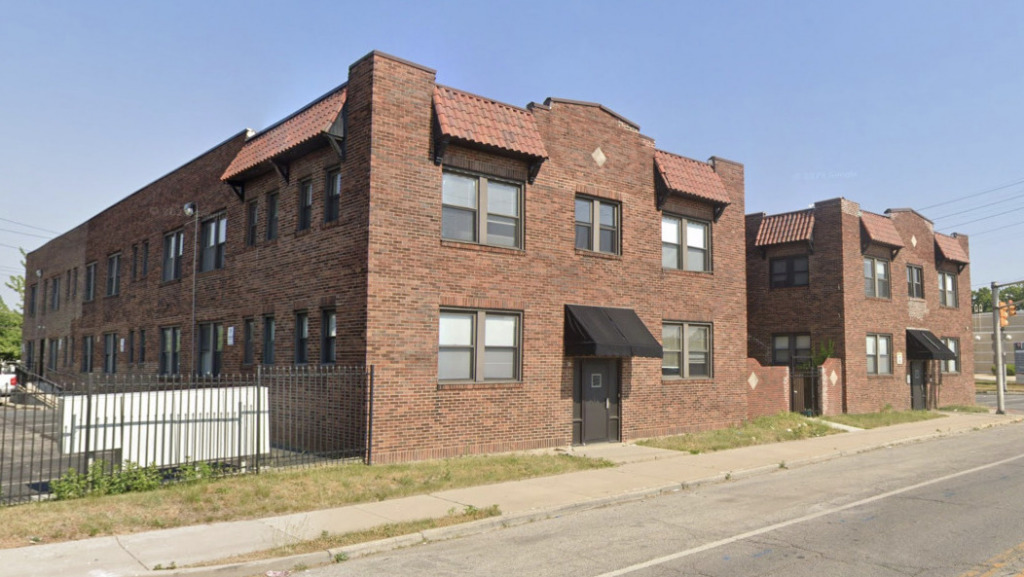Subscriber Benefit
As a subscriber you can listen to articles at work, in the car, or while you work out. Subscribe NowCity officials joined local corporate and philanthropic leaders Wednesday to recap results during the first five years of Indianapolis’ Housing to Recovery Fund and launch a $10.5 million fundraising campaign for the program.
At the near-north-side site of a project supported by the fund, Indianapolis Mayor Joe Hogsett praised the fund that launched in 2019 as a joint effort between the Indianapolis Foundation, the Coalition for Homelessness Intervention and Prevention, and the Corporation for Supportive Housing.
Nearly 400 people have been affected by contributions to the program, according to the city, and 97% of the participants have reached housing stability. Housing stability is defined as having been consistently housed for at least one year.
“This is how we solve homelessness,” Hogsett said. “This is how we ensure more of our neighbors have what they need to live with dignity.”
The mayor was joined by corporate leaders including IU Health CEO Dennis Murphy and philanthropic leaders such as Richard M. Fairbanks Foundation CEO Claire Fiddian-Green, in part to promote the new fundraising push announced by the Indianapolis Foundation.
Lorenzo Esters, president of the Indianapolis Foundation, asked for contributions to the corporate-philanthropic grantmaking initiative. The campaign is called “Stop and Help,” and has already received $1.5 million in commitments, Esters told attendees.
The fund is important to Indianapolis homelessness stakeholders due to its flexibility. Money goes straight to service providers, like Horizon House, and aren’t under the strict regulations set by federal funding.
“Maybe somebody gets into housing and realizes after a little while it’s not the right fit, maybe not the right neighborhood, maybe the dynamics,” Chelsea Haring-Cozzi, executive director of CHIP, told IBJ. “It provides flexibility to then rehouse somebody somewhere else that’s maybe closer to transit, or closer to a better community network. HUD dollars won’t pay for that kind of stuff.”
Additionally, there are often gaps in how much rent Indianapolis Housing Authority vouchers will cover and what is charged to the renter. The fund can be used to fill those gaps, Haring-Cozzi said.
Speakers attributed the effectiveness of the Housing to Recovery dollars in part to the city’s switch to a housing-first strategy. The National Alliance to End Homelessness defines housing-first as “a homeless assistance approach that prioritizes providing permanent housing to people experiencing homelessness, thus ending their homelessness and serving as a platform from which they can pursue personal goals and improve their quality of life.”
Haring-Cozzi said Indianapolis’ approach because it takes into account that “housing-first” does not mean “housing only.” Programs supported by the Housing to Recovery Fund match individuals leaving homelessness with a case manager to walk alongside them as they navigate finding a place to live, a job, and potentially assistance for mental health and addiction.
Hogsett credited the strategy as the reason for a sharp increase in federal funding.
Indianapolis received nearly $12 million in federal continuum of care grants from the federal department of Housing and Urban Development, the city announced last week. The annual award was a 20% increase over last year and a 170% increase since 2016.
Additional permanent-supportive housing units
Stakeholders on Wednesday also unveiled the newest Housing to Recovery-supported project, St. George Apartments at 2101 Boulevard Place.
The 53-unit building, formerly known as Douglass Court Apartments, will provide interim housing to individuals exiting homelessness and seeking permanent supportive housing. Horizon House will provide wrap-around services to residents in the building.
Stakeholders used various funding sources to redevelop the apartment complex. IU Health chipped in a $2.1 million grant for the purchase of the building. Another $1.5 million in city opioid settlement funds will pay for rehab and operations, led by Rdoor Housing Corp. and Collins Housing Solutions. Also, $390,000 from the Housing to Recovery Fund will cover the cost of Horizon House services.
The mayor said that permanent supportive housing projects, like the one unveiled Wednesday, are cheaper than the overall costs that cities bear when individuals face homelessness, mental health issues and substance abuse disorders.
“For roughly $8,000 a year, we can successfully accomplish what about $30,000 a year fails to do through jails, EMT runs, ER visits and costs associated with homeless encampments,” Hogsett told attendees.
Please enable JavaScript to view this content.


who verifies these findings….if someone is simply put into an apartment somewhere and has a physical address….does that count as a success. Who are we helping…demographics please….mothers with children, people who are situationally on the streets but otherwise tight between the ears, employable, ….just needing a hand up versus a hand out, meth and X and Spiceheads? More detail….please
That can all be found on the CICF website…
Is ,400 people affected, the number to base the 97%.
If not, what are the actual numbers of homeless that have been housed.